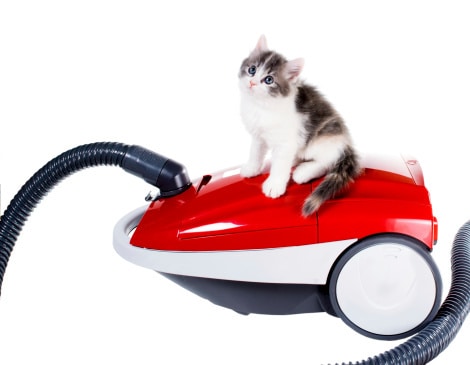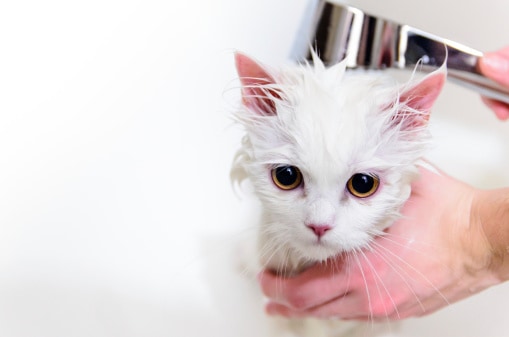Sneezing, itchy eyes, runny nose…If someone in your home is diagnosed with a cat allergy – don’t feel like you immediately need to say goodbye to your beloved feline friend (or your allergic family member!). Follow these simple tips to help keep cat allergies at bay.

Contrary to popular belief, cat hair isn’t usually the problem. Dander, the proteins in cat saliva, urine, and skin cells, is more likely the culprit. These particles of dander can get lodged in the fibers of your carpet and furniture. Fortunately, there are a number of ways to combat these pesky proteins:
Vacuum

Vacuuming is one of the best ways to clear the air in your home – but in addition to sucking up dander particles, some vacuums spew out as much as they collect, sending those allergens right back into the air you’re breathing – and sometimes doing more harm than good!
Check out top-rated vacuums for people with pets, and consider a vacuum with a HEPA filter. Carpets can hold a ton of cat allergens, so in addition to regular vacuuming, have your carpet steam cleaned often.
Anti-Allergen Spray
The reason some people develop allergies is due to how our bodies react to certain things. The immune system overreacts to something and triggers a reaction. Anti-allergen sprays work by masking the signal from allergy-causing dander to our nervous system.
Use an anti-allergen spray on carpeting, upholstered furniture, and your mattress to render allergens harmless.
Air Purifier
An air purifier that includes a HEPA filter can remove a large number of allergens – like cat dander – from the air in your home. This is particularly important if you’ve got a well-insulated room where these allergens build up.
Stand-alone air filters are generally more effective than a whole-house system. Avoid using an air purifier with ozone, as that can sometimes make allergy symptoms worse.
Shampoo

Reduce the amount of dander on your cat’s fur by bathing him regularly. But, be sure you only use a pet shampoo that is approved for use in cats! Many dog-specific shampoos contain ingredients that are toxic to cats, so read the label carefully. Or, if your cat won’t tolerate a bath, try using cat cleaning wipes to help reduce the dander on your kitty.
Litter

Cat dander is found in urine, so it should come as no surprise that the litter box should be off-limits to an allergy sufferer. To help prevent allergic reactions, look for litter that has little to no dust and have someone who isn’t allergic to cats scoop and clean the box.
Cat allergies are nothing to sneeze at! Rescues and shelters are full of kitties who were turned in because their owners were allergic. By taking some extra precautions around your home, you can help make living with a cat (and a person with a cat allergy) more enjoyable!
Do you suffer from cat allergies? What have you found that helps? Tell us!
Did you find this article helpful? Pin it!








